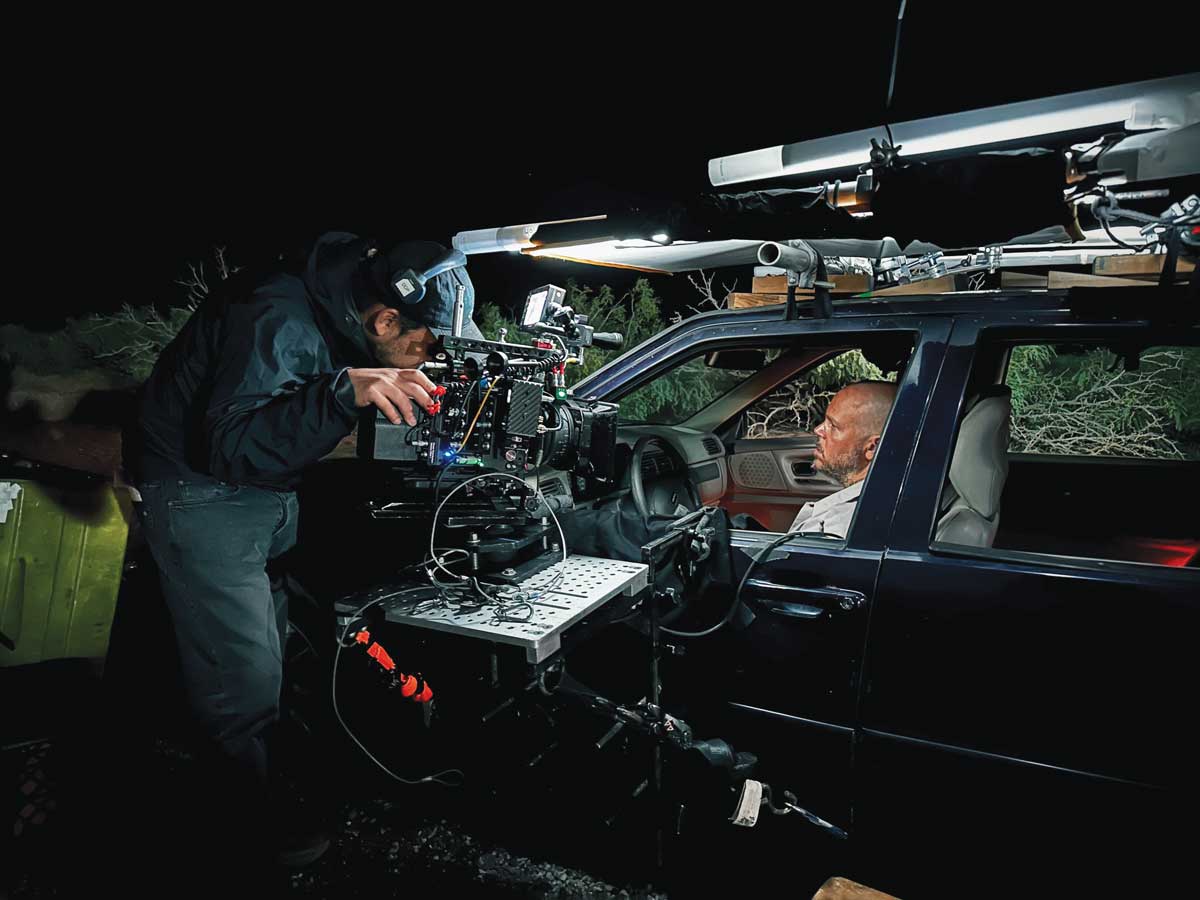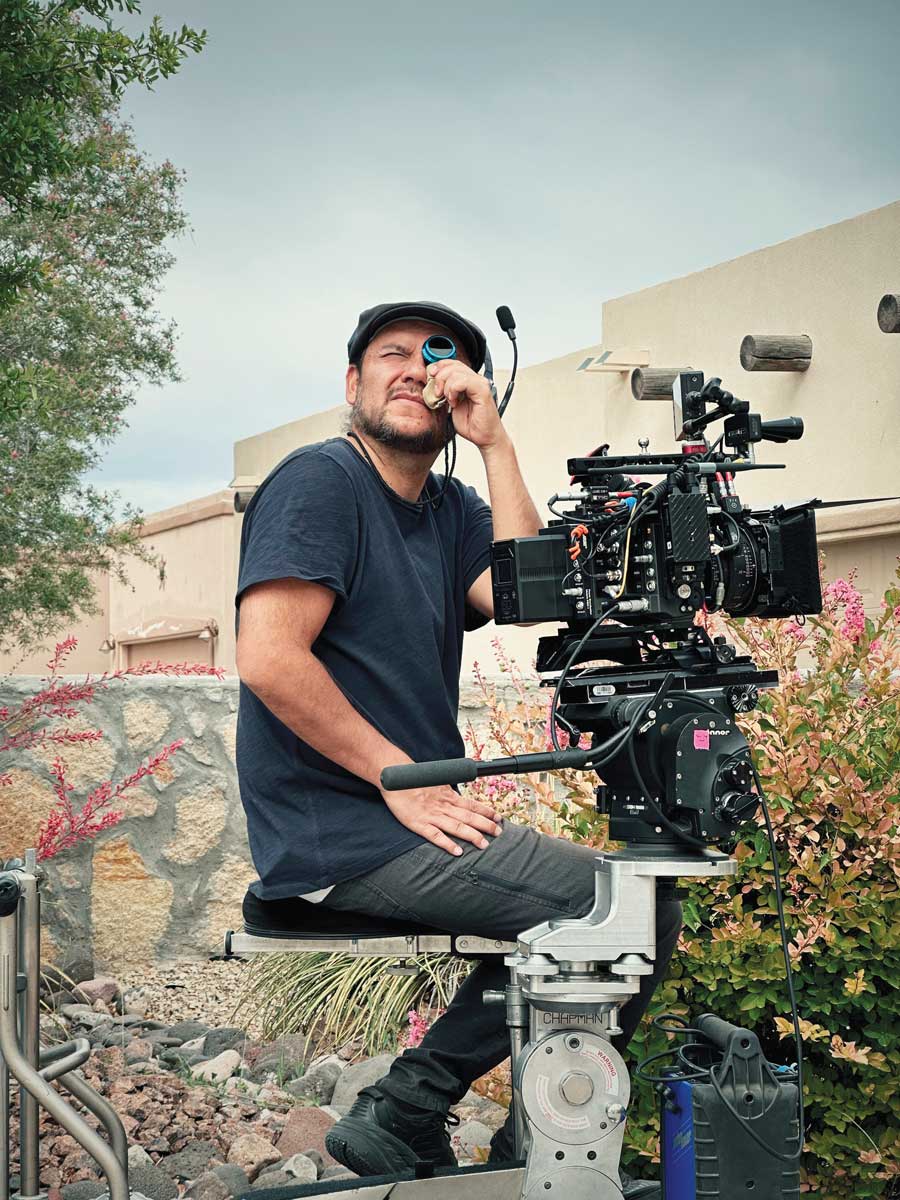
In The Summers
Posted on Apr 9, 2024 by Samara Husbands
Some like it hot
The cinematographer of Sundance winner In the Summers details his role in delivering poignant Latin-American storytelling with beauty
Words Robert Shepherd
Sundance Film Festival’s US Dramatic Competition bestowed the 2024 Grand Jury prize on In the Summers, marking an impressive feature film debut for Alessandra Lacorazza Samudio.
Over 20 years, the poignant Latin-American narrative film unfolds in four distinct chapters, detailing the annual visits of sisters Violeta (Dreya Castillo) and Eva (Luciana Elisa Quinonez) to their father, Vicente (René Pérez Joglar, professionally known as Residente), in Las Cruces, New Mexico.
Despite the patriarch’s rugged appearance, marked by tattoos and a cigarette, his demeanour softens upon reuniting with his daughters at the local airport.
Initial awkwardness fades as they dive into Vicente’s backyard pool, promising summers ahead. Yet, underlying tension hints at his enigmatic nature.
The director intricately structures each chapter in this one hour 38 minute bilingual film (both English and Spanish), commencing with a candlelit altar that symbolises the family’s state.
In Chapter II, set years later, teenage Violeta and Eva (now portrayed by Kimaya Thais and Allison Salinas) find Vicente changed, grappling visibly with addiction, with his once-pristine pool now reflecting inner turmoil.
With his absence felt, Violeta explores her sexuality alongside Vicente’s friend Carmen (Emma Ramos), while Eva questions her place within the family.

BEHIND THE CAMERA
The production, which took place in New Mexico and wrapped last summer, was shot in by in-demand director of photography Alejandro Mejía AMC –widely admired for previous works including the Sundance Alfred P Sloan award-winning Son of Monarchs.
In this latest film, the visual language is elegant and helps emotionally catapult the audience into a love letter to resilience.
Mejía selected the ARRI ALEXA 35 as his first camera choice, because of the latitude and colour science behind the sensor, making it ’the perfect tool for the conditions of the project’ at hand. “After extensive camera and lens tests at ARRI Rental NYC, we determined the Moviecam lenses combined with the ALEXA 35 to be the perfect match for our film,” he explains. “The lenses have an organic look and possess a nice, gentle softness. What I like most is how they render faces, maintaining consistent sharpness and contrast throughout the set – all within a modern housing. Combined with the ALEXA 35’s soft, nostalgic texture, we found a look that was perfect for our story.”
Told in chapters, the story weaves memories of childhood with adult realities, paired with Mejía’s exquisite lighting changes to reflect the various time periods.
He says his approach to lighting always came from a naturalistic standpoint, adopting subtle but powerful changes during each chapter.
“From the beginning, we wanted to incorporate hard light to our approach because of the location, time of year and story,” he adds. “Normally, we see a tendency towards soft light, but for this project we chose to embrace what this desert place of Las Cruces offered us. We used a combination of ARRI HMI M18s and sometimes would bounce light with the Cine Reflectors from Lightbridge.”
For certain scenes, Mejía and his team also used ARRI SkyPanels and the Creamsource Vortex. “The Astera Titan Tubes and Rosco DMG DASH were very helpful for some quicker set-ups; for our day exteriors we worked a lot with natural light,” he comments.
TECH TRICKS
No blue or green screen was used on the film, while a mere 17 shots of the total project required VFX. “Most of them were shots at night where we needed to add stars – some were for our car accident sequence,” Mejía explains. “We worked closely with the VFX team; the most important consideration from the cinematography side was to deliver the right amount of light and darkness on those shots.”
Despite being very proud of the film overall, Mejía has no doubt his favourite part is Chapter III. “I like the look we achieved and the composition,” he expresses. “It’s more static in terms of camera movement and very emotional. I’m also extremely happy and proud of the colour grade we achieved together with colourist Kath Raisch at Company 3.”
When it came to the most complex scene, Mejía identifies a car accident that takes place at night and in the desert. “It required us to position our light sources in places where there is practically nothing, using a large softbox created by ten to 12 SkyPanels mounted on a Condor Crane, which we achieved thanks to the support of the incredible local New Mexico crew,” he continues.
“The logistics to transport all the equipment there during the day and the high temperatures added another layer to the challenge, but in the end we were successful thanks to all the support from our producers.”
In the Summers premiered at the Sundance Film Festival, with ongoing discussions for worldwide distribution
The feature was first published in the April 2024 issue of Definition.















